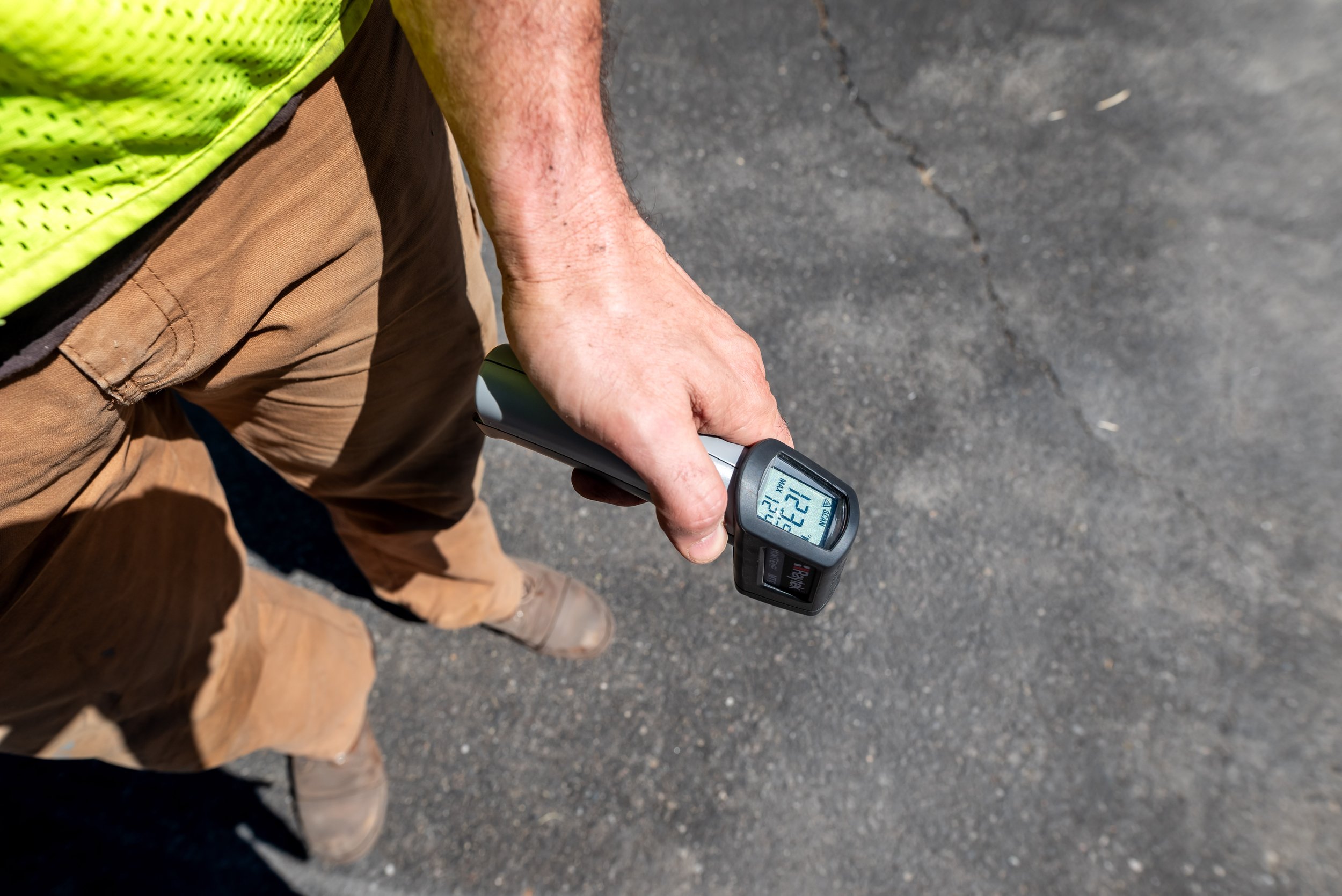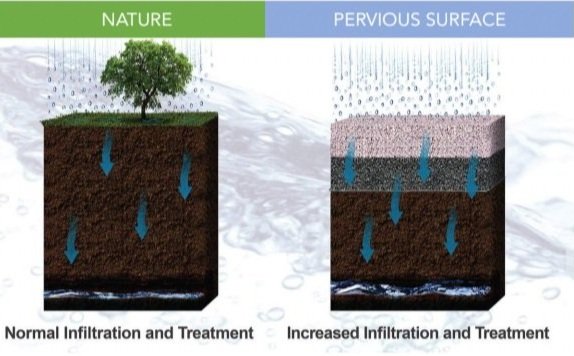
why depave?
Graphics provided by NASA DEVELOP. as a part of NASA’s applied science workforce development program. Click here to learn more
Why Depave?
Impervious surfaces such as concrete and asphalt can be useful for providing access for pedestrians, bicyclists, wheelchair users, and cars. However, the paving over of millions of acres of land and vegetation have contributed to numerous economic and environmental problems. In many cities, over half of the urban land is paved for roadways and parking lots. While we may need sidewalks and roadways, we can minimize the pavement we use for driveways and parking areas, and thereby restore the natural environment. Ideally, we shouldn’t be paving over habitat and farmland to accommodate auto-centric development, but through depaving, we can reverse the damage.
Pavement Gets Hot
Pavement increases the summertime temperatures in cities and suburbs. This “heat island effect” in urban areas often increase temperatures by about 10 degrees (F) higher than surrounding rural areas. This in turn increases the need for electricity to power fans and air conditioning units. The elevated temperatures also contribute to the formation of ground-level ozone – the main constituent of smog.
The removal of pavement allows for the revegetation of land with trees and plants.
Legacy of Racism
In the 1930s, the federal government rated neighborhoods in urban areas to help mortgage lenders assess “low risk.” Low ratings were determined largely by race and ethnicity. Areas with mostly Black and Brown residents were deemed as high risk or “redlined.”
This racist housing practice continues to have economic and environmental effects today. Nearly 90 years after those maps were created, historically “redlined” neighborhoods are hotter than the highest-rated neighborhoods by an average of 5 degrees Fahrenheit.
Dr. Vivek Shandas, an urban studies professor at Portland State University, led a series of heat mapping projects across the country with help from community volunteers. Of the 108 U.S. cities researched for this study, Portland, Oregon had the most drastic difference between redlined neighborhoods and highest-rated ones. A difference of 12.76 degrees Fahrenheit!
Pavement is impervious
That means “not letting fluid pass through.” Impervious surfaces prevent rainwater from entering the soil and instead divert it to nearby waterways. By depaving, we are reducing the chance of flooding and creating alternative drainage areas for stormwater for the revegetation of land with trees and plants.
What happens when it rains?
When it rains, stormwater carries pollutants such as oil, antifreeze, plastics, pesticides, and heavy metals from roads, buildings, agricultural or horticultural areas, into our stormwater drainage networks. In places like Portland, Oregon, which uses combined sewer overflows, the high volume of stormwater runoff forces untreated sewage into the rivers, thereby polluting local streams, rivers, and riparian habitiat. By depaving, we reduce stormwater runoff which allows pollutant filtration to occur before water reenters our waterways. By slowing down stormwater, we also reduce flooding. .
Benefits of Urban Vegetation
Cooling of homes and offices by shading the sun’s rays and the protection against harsh winds.
Ambient cooling from evapotranspiration of rain on the leaves.
Aesthetic enhancement to areas and psychosocial benefits associated with greenery.
Enhancing air quality by removing particulate pollutants and carbon dioxide from the air while producing oxygen.
Visual privacy and reduction of noise from the street.
Traffic calming when trees are planted along urban streets.
Restoration of local habitat for birds, insects and other wildlife.
And if the previously-paved land is used for farming, this provides food and nutrition for local residents.








